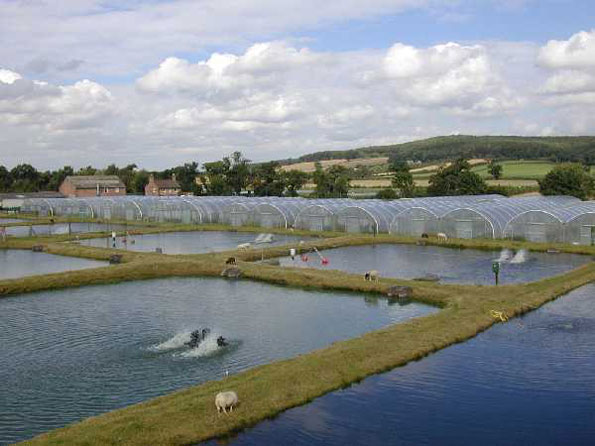The fish supply industry in England and Wales is set to benefit to the tune of £500,000, following the Environment Agency’s decision to remove two parasites from its list of controlled Category 2 pathogens.
Category 2 parasites include those that are not native, but which have become established, and which the Environment Agency considers are a potential threat to native fish stocks.
“Environment Agency fisheries scientists have been reviewing the list over the past two years to see if the potential risks continue to be borne out by the evidence. They do not. The evidence has now been peer-reviewed by a panel of Environment Agency scientists and independent fish health experts,” explained Environment Agency Fisheries Policy Advisor Paul Lidgett.
The panel consisted of Nigel Hewlett, and Chris Williams from the Environment Agency, Prof. Jimmy Turnbull from Stirling University, Dr Ruth Kirk from Kingston University, Bernice Brewster, a private fish health consultant, and Dr Steve Feist from the Centre for Environment, Fisheries and Aquaculture Science.
The panel concluded that neither of the two parasites – Atractolytocestus huronensis and Paraergasilus longidigitus – pose a significant threat to fish stocks, either at an individual host or population level.
Atractolytocestus huronensis and Paraergasilus longidigitus are parasites that appeared in fisheries in the early 1990s. A. huronensis is a tapeworm that lives in the gut of common carp and its variants. P. longidigitus is a crustacean that infects the nasal cavity of a wide variety of coarse and salmonid species.
“I think this is the right decision,” confirmed fish health consultant Ian Welby. “I am pleased that it has now been shown that neither parasite is a major threat to fisheries. More importantly, this should instil greater confidence in the Category 2 list and that the remaining parasites are on the list for good reason.”
Fish infected with Category 2 parasites can, currently, only be stocked into fully enclosed waters where they cannot escape to the wider environment. The Agency had adopted this precautionary position in absence of sound evidence that these parasites do not pose a threat.
“The decision to remove the two parasites from the list means the presence of either parasite in a health check will no longer be grounds for refusing a Section 30 consent to stock in open waters such as rivers, canals and unenclosed still waters,” continued Paul Lidgett.
“We have estimated the value of the fish with the parasite now allowed to be stocked is about £500,000 per annum. The change will come into effect on September 1, 2007, giving the industry time to adjust before the next coarse fish stocking season. Not only is the decision good for fish suppliers, it also allows the Environment Agency to focus on the more significant threats.”
Carl Francis of Mainstream Fisheries and the Coarse Fish Farmers and Traders Association agreed with the decision, saying: “The Coarse Fish Farmers and Traders Association welcome the news the Environment Agency has reviewed the status of these parasites on the basis of science and consider they are not a threat to fisheries. A decision which reaffirms the policy of the Agency to maintain movement restrictions, where possible, only on those parasites which are demonstrated to be harmful.”
Category 2 parasites (2)
Mike Heylin, of the Fisheries and Angling Conservation Trust, also agreed. “As we have seen with Koi Herpesvirus, new and emerging fish diseases can pose a real threat to fisheries in England and Wales. It is essential we focus our efforts on the parasites that really count.”
Further information can be found at www.efishbusiness.co.uk.







